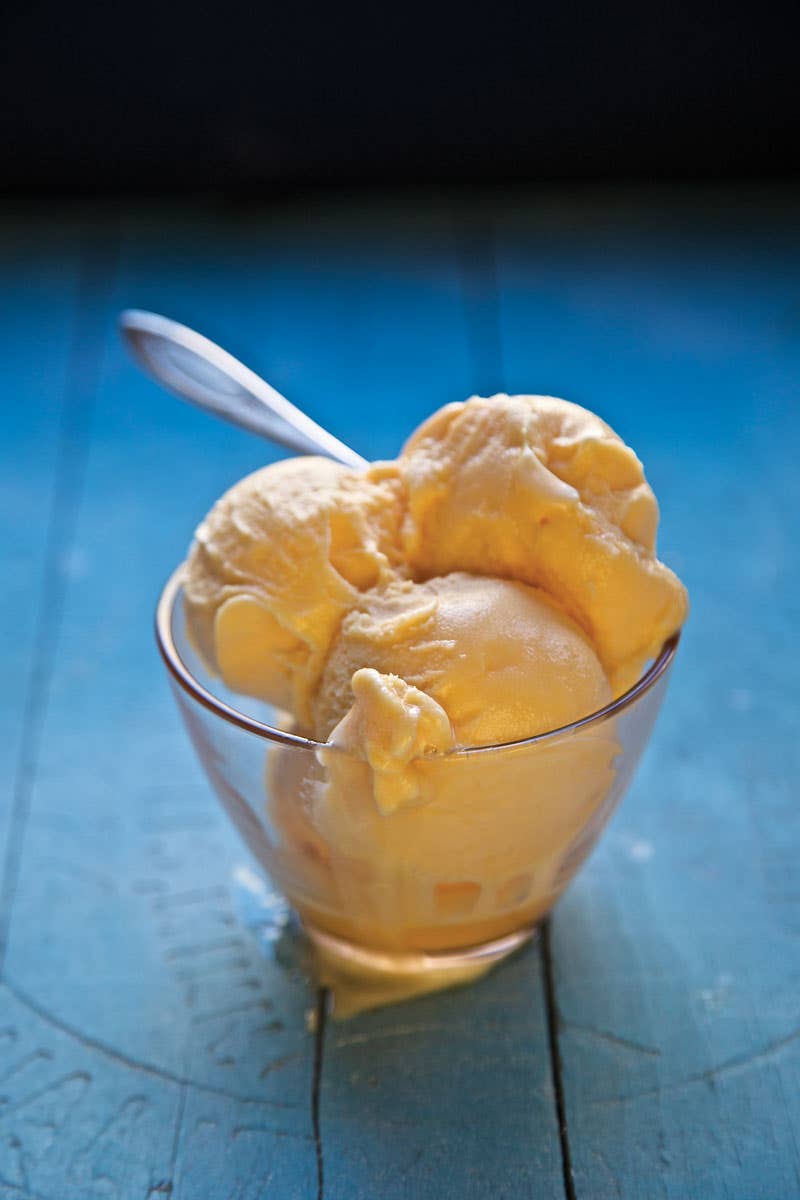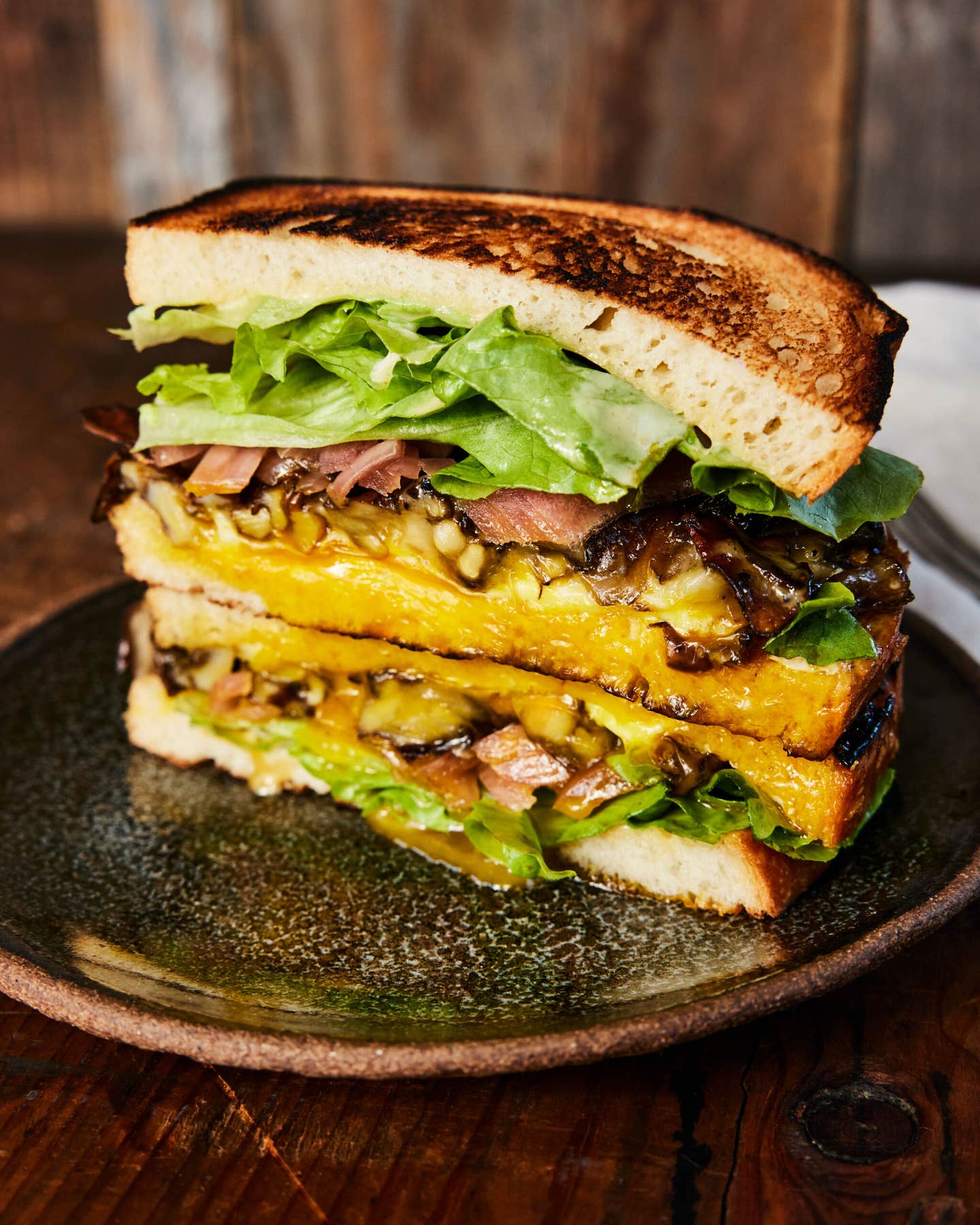
Milk’s Finest Hour
From decadent sweets and creamy condiments to the best marinade for tender grilled meats, yogurt’s culinary potential is boundless
When I was a kid, my mother made yogurt from the fatty cream-top milk delivered in glass bottles to our house in London. Delicate and wobbly, the yogurt broke at the touch of a spoon like a ghostly crème caramel. She'd make it in a ceramic jar, which would appear on the dining table at least once a week when we ate Gujarati-style potatoes and string beans fried with cumin seeds, or bright yellow lentils with rice. My brother and I would take spoonfuls to temper the heat of the chiles. The curds were cool and tart in a puddle of cloudy whey but never exactly the same as the last jar.
I didn't know the reason then, but here's why: Yogurt is alive. It's milk, occupied by colonies of thermophilic (heat-loving) bacteria, thickening and souring within hours as it ferments, with countless variables in the process. Like my grandmother, who'd grown up in rural Uganda, my mother made yogurt the old-fashioned way, by feel, and couldn't be bothered with a thermometer or timer. Often it was perfect: silky and mellow, tasting exquisitely of fresh milk. But on days when she rushed warming the dairy the proteins overheated and coagulated into tiny lumps, giving the final yogurt an edge of graininess. If she forgot about the jar for a day, the yogurt might ferment for too long and end up thin, or a touch too sour.
For me, these surprises were all part of yogurt's charm, and I loved it as a condiment almost as much as I loved kadhi, a spicy, savory yogurt soup from India that happens to be one of my earliest and most cherished food memories. When yogurt is heated it splits, but kadhi is cleverly bound with a spoonful of chickpea flour, which acts as a stabilizer and keeps the texture smooth and glossy. The soup, seasoned with green chiles, garlic, and ginger, can be thin and neon yellow with turmeric, or thick and light. My mother's was pale in color but full of flavor—a soft, creamy blanket embroidered with spice and heat. If the kick of dry red chiles was too much for me to bear, I was sometimes allowed to sprinkle the tiniest bit of white sugar over the top.
Man has been fermenting milk for thousands of years. In fact, yogurt is so simple to make that it most likely started as a happy accident among the earliest nomads to herd and milk animals. Sitting around on a sunny day, the milk had all it needed to get the party started: bacteria and warmth. Within hours it transformed into something more valuable than raw milk, something that would last longer without spoiling. Later, yogurt makers all over the world learned to heat the milk first, then inoculate it with bacteria, controlling the texture and tang more carefully.
Today, yogurt is one of the most universal and diverse foods in the world. People from the Mediterranean to South Asia make variations using distinct regional bacteria and milks—goat, sheep, cow, camel, yak. In the Middle East, yogurt is dehydrated in the sun, often with the addition of wheat, and turned into dense pellets or powders known as kashk that can travel well in hot, dry climates and keep through long winters. Rehydrated with water, it can thicken soups or serve as a garnish to cold weather stews. In India, yogurt makers hang the curds in muslin, draining the whey to produce a dense, luxurious cream (I like it best beaten with sugar and infused with cardamom in the dessert known as shrikhand). Other kinds of fermented milks have developed too—not technically yogurts but variations on the theme—like Icelandic skyr and creamlike viili from Finland, which is made with cultures that grow at cooler temperatures, producing milder flavors. In Russia and central Asia, yeast is added to the culture to make kefir and kumys, which produce alcohol as they ferment into wonderfully sour, fizzy drinks.
The world's yogurts were once all homemade. Then, in the early 20th century, a Russian scientist named Ilya Mechnikov isolated the bacteria (see "The Science of Yogurt") that became the standard starter for industrially produced yogurt. In Barcelona in 1919, using that same bacteria, Isaac Carasso founded Dannon, one of the first companies to bring yogurt to the masses in the U.S., where it was previously known only among the immigrant communities who made it at home, using yogurt from earlier batches as a starter. Carasso opened a factory in New York in 1942, and by the time he died in 2009 at the age of 103, he'd played a major role in taking yogurt from immigrant foodstuff to global phenomenon. I grew up enamored of my mother's homemade yogurt, but when I left home for school, if I couldn't find small-batch artisanal jars that approximated her own, I found comfort in the sweet blandness of commercial versions which I loved under a wave of honey.
Years later, after working in restaurant kitchens, I learned to appreciate yogurt as an ingredient. Baked with sugar, vanilla, and eggs in a [tart](Labneh, a thick strained yogurt, is the base for this vanilla-spiked tart.) shell or churned with sugar and fruit in a refreshing spiced persimmon frozen treat, it lends creaminess and depth of flavor to desserts. Blended with herbs and spices, it makes a fantastic savory drink, as in Bangladeshi ginger-and-mint burhani. In Turkish çilbir, softly poached eggs sing with garlicky yogurt and paprika-infused butter. And yogurt's lactic acid, produced as it ferments, makes it ideal for tenderizing lamb shoulder or other tough cuts in a marinade. A dollop adds a pleasant, tangy note to herb-packed ranch dressing, perfect atop a pile of red leaf lettuce. Mixed with cucumber, it makes a cooling condiment, such as Greek tzatziki, and when strained, as with labneh, it becomes thick and creamy enough to coat pasta like a sauce.
On a particularly gloomy day this winter, I felt pangs of homesickness. I remembered standing on a red stool when I was little so I could reach the stove to stir my mother's kadhi with a wooden spoon. "Don't stop stirring!" she would shout from the other side of the kitchen as she prepared the vagaar—an infusion of black mustard seeds, cloves, cinnamon sticks, and a sprig of curry leaves in hot clarified butter that seasons the kadhi just before it's served. So I'd stir, switching arms as each got tired, breathing in the steam rolling off the top, which smelled sweetly of milk and garlic. If I got distracted, the mixture would curdle, and dinner would be ruined, but if I could be patient and just keep the pot moving until it came up to a boil, it would be perfect.
I needed a warming taste of my mother's cooking, so I called her for the recipe, prepared to start from scratch and make my own yogurt but wishing I didn't have to. She just laughed. It turns out she always used plain, full-fat Dannon when it came to making kadhi. I found a tub at the corner store and got to work smashing the green masala—a paste of chile, garlic, and ginger—and snipping curry leaves from the pot by my window. The first batch looked and smelled just right, but it was far too thick. I tried again. Over the winter, I made kadhi many times, but each time it was a little different. An adventure, it was a sweet reminder that yogurt, though an ancient food, is very much alive.
Keep Reading
Continue to Next Story










